Trillium erectum
Most common of the trilliums in our state
Trillium erectum purple trillium
Purple trillium is a common spring wildflower found throughout most the state in moist and mixed forests. This plant doesn't have true leaves; instead, it features leaf-like bracts arranged in a whorl of three at the top of the stem (not a true stem but a scape). Both the roots and leaves emit an acrid odor. The solitary flower on a long (up to 3″) peduncle arises above the leaves. The flowers, which have three petals and three sepals, are known for their particularly foul smell, earning the common name "stinking Benjamin". While the petals are typically maroon, they can occasionally be white or yellow-green. The plant's faint fetid odor and maroon petals attract carrion flies, which are the primary pollinators of this trillium.
Habitat & Range
Grows in moist, shady woods & stream floodplains with rich soil. Prefers light shade or dappled sunlight.
Present throughout the state, except a few counties in the south-central part of the state. See distribution map at BONAP.
Range: Nova Scotia, Quebec, Ontario south through eastern and central US.
| EMP: | FACU |
|---|---|
| NCNE: | FACU |
Phenology
Flowers April to mid May.
Characteristics
Flowers single, 3 green sepals, 3 maroon to reddish-brown or (rarely) white, yellowish or green petals; peduncle(1½ to 3″) erect or declined, light green and smooth; anthers 1/2″ long at most; 2″ across
Leaves(bracts) simple, entire, dark green, in a whorl of 3; ovate to rhombic, acuminate tip, stalkless or almost so; primary veins prominent & parallel, secondary veins net-like; 7″ long
Stem(scape) erect, smooth, stout, light green
Fruit oval, reddish-maroon berry; ½″ long; with several seeds
Height 8-16″
Plant Codes
S-rank: S5 (Secure)
G-rank: G5 (Secure)
Medicinal Qualities
Purple trillium has been traditionally used as a folk remedy for bleeding, skin irritations, and snakebites. A tea made from its rhizomes and roots was commonly given to new mothers after childbirth to help reduce bleeding.
Ecology
Deer browse on the leaves. Certain insects such as carrion flies are attracted by the color and fetid smell of the flowers and are the main pollinators of the plant.
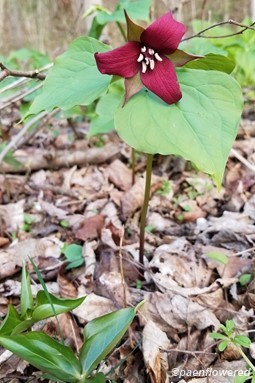
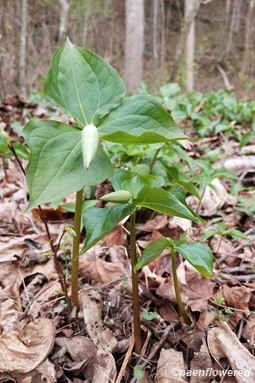
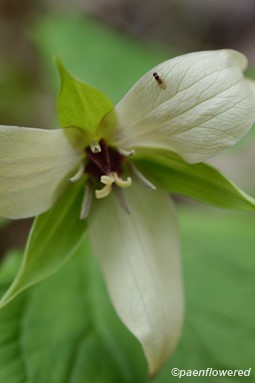
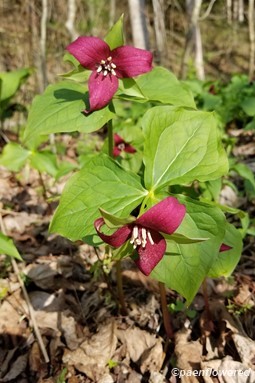
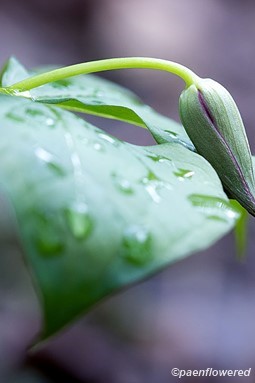
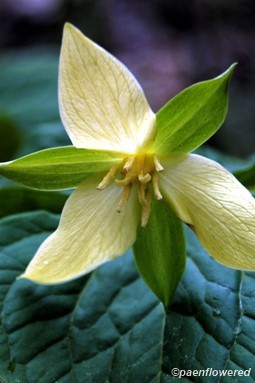
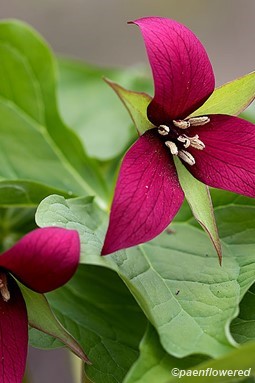
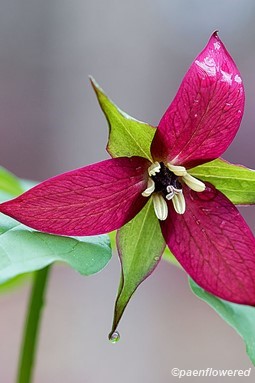
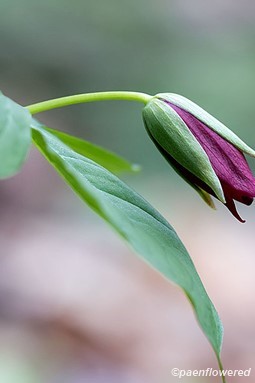
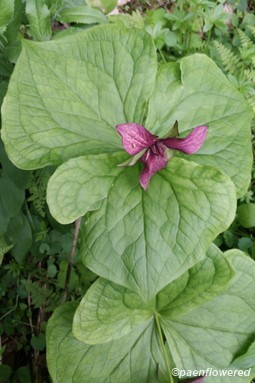
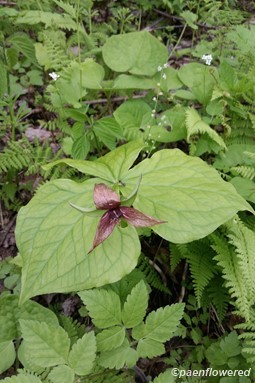
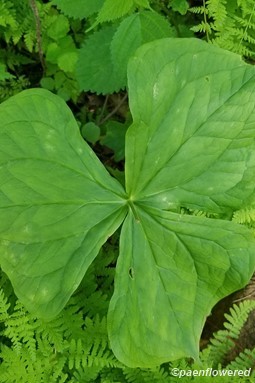
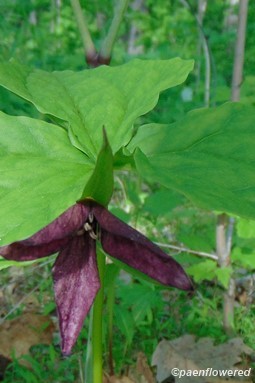








Comments
Have you spotted this plant in your area? We'd love to hear about your experience! Share your comments or questions about the plant below. Comments are moderated before posting.